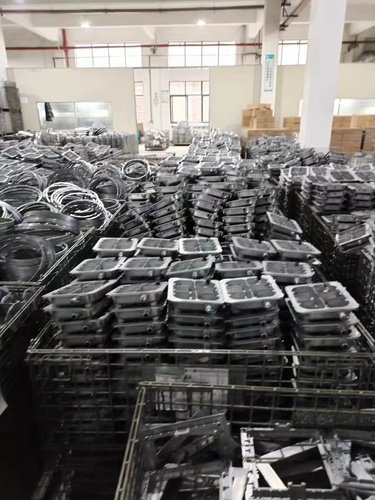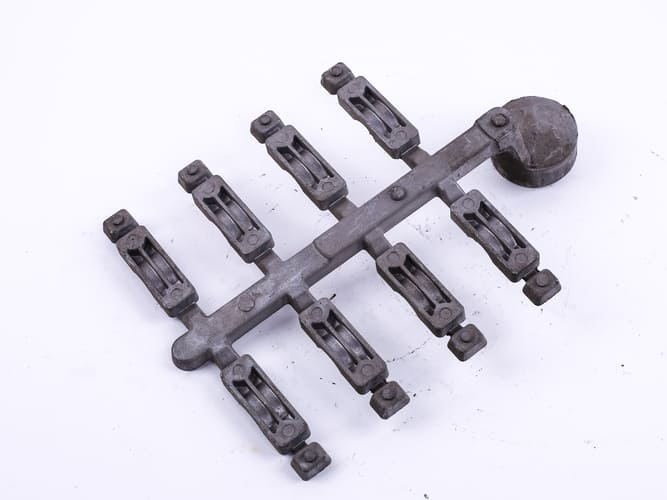Die casting is one of the most dominant and reliable processes in part manufacturing. It facilitates the creation of tiny components with intricate shapes.
Die casting is an efficient and cost-effective production process used to produce cast parts in bulk.
As a production process, die casting has several advantages. In this article, we will discuss these advantages. So, let’s get to it!
What is Die Casting?
Die casting is a production process that involves melting and pouring molten metal into an already made steel mold.
The molten metal takes a designed form or shape as it cools off in the steel mould. Molds used in die casting are known as dies, die casting moulds, or tools.

The die-casting process is used in manufacturing parts for different industries such as industrial, lighting, households, and automotive industries, among others.
Advantages of Die Casting
The advantages of die casting include:
Mass Production
Die casting is an automated production process that allows you to produce many parts with particular shapes and tolerance.
As a result, this process offers high productivity and gives room for repeatability.

Since die casting is an automated process, it is pretty easy to mass-produce parts at speed and efficiently.
In addition, die casting allows the production of complex and identical items in industries like the medical and automotive industries.
Note that high-pressure die casting is more suitable for bulk cast production than low-pressure casting.
The low casting forces the molten metal to travel vertically from a furnace into the mold in a slow and gradual climb.

Finishing Options
Castings made with die casting have brilliant surface finishings. However, there are still various surface finishing options you can use on the parts.
These die-cast surface finish options provide durability, decorative appearance, and protection for your castings.
Surface finishings help to improve the appearance of castings; this also makes the castings corrosion-resistant.
Most finishing options for die-cast parts include antiquing, painting, plating, ceramic coating, and powder coating.

Complex Thin-walled Parts
Die casting allows you to produce castings with intricate shapes and lightweight components.
These castings usually possess significant strength-to-weight proportions, which gives them an advantage over other casting processes.
Raw Material Compatibility
Die casting is a process that is compatible with various metals and alloys. For example, zinc, tin, copper, aluminium, lead, and magnesium
Consider die casting an ideal option for your high-volume manufacturing projects.

High-Quality Finishing
Die casting gives high-quality finishings on the surface of castings.
It provides a glossy, crystalline surface free of burrs and deflections.
With die casting, you don’t need to worry much about rough or irregular casting surfaces.
Instead, your casting bears fine, smooth surfaces. As molten metal pours down the mold cavity, it fills all the empty spaces or vacuum, ensuring the casting gets a smooth surface.

Short Lead Time
In die casting, the whole production process is automated and there are not much post-processing processes.
So, there is a short lead time in die casting.
Depending on the materials’ properties or the parts’ size, the die-casting process can be as short as a few seconds of operation.
Note that the production period for thin-walled castings is shorter than that of too-thick castings.
This is because castings that are too thick require more time to solidify.

Production Costs
Cost-effectiveness is another benefit of the die-casting production process. It helps industries reduce the cost of production.
In die casting, there is little wastage, which thereby maximizes cost. Also, die casting reduces cost by consolidating multiple parts into a single cast.
In fact, secondary milling, reaming, and boring operations can be eliminated if the right features are incorporated in the casting.

High Dimension Tolerance and Accuracy
Dimensional tolerance and accuracy are fundamental quality indicators in additive manufacturing techniques like die casting.
Because die casting is a computer-controlled process, parts made with this process have excellent precision.
Likewise, the castings are always uniform, dimensionally stable and durable.

Die casting has a better close dimensional control than alternative processes.
It has a tolerance of ± 0.07 mm for Zinc with precisely 25mm size, and ±0.07 mm for every additional 25 mm.
The die casting process creates parts that match the actual size requirements of the designer.
Its great dimensional tolerance and compliance with design ensure that there is little or no deviation from the programmed design.

Strength and Weight
Die casting produces parts that are strong and lightweight. This differentiates casted parts and welded parts.
Die-cast parts are strong due to their coherent body structure.
The material used for casting a part determines the strength of the die-cast part instead of the design.
Likewise, die-cast parts are lightweight compared to parts machined with alternative processes

Die casting allows creation of components with 0.5mm walls instead of 2mm. It causes a 75% reduction in the weight of die-cast parts.
This weight reduction capability is a major breakthrough in industries such as automotive and aerospace industries, where lightweight parts are desirous.
High Production Efficiency
Die casting is a manufacturing process that is relatively easy to robotize and mechanize.
Usually, cold chamber die casting machines cast up to 50-90/hr. While the hot chamber die casting machines cast 400 to 900/hr.
There is a high production efficiency of production.

Great Mechanical Property
Parts made with die casting process have great mechanical properties.
They are rigid and very hard. This is due to how the metal solidifies under high pressure.
Due casting produces castings with crystalline form, able to withstand stress without fracturing.
However, note that:
• Die casting is not cost-effective for small-scale casting. It requires an initial high cost to procure the needed sophisticated machines and tooling.

• Die casting process is prone to defects such as gas porosity, shrinkage, cold shot, misrun, etc.
For example, during die casting, molten metal fills the mold cavity at high speed, but the cavities lack gas permeability. Hence, gas bubbles can get trapped within castings.
The gas cavities in the castings affect the cast parts when exposed to harsh conditions.
• Majorly, only non-ferrous metals (such as aluminium, zinc, etc) can be cast in die casting. Casting of ferrous may be too complex.
Conclusion
In this article, we have highlighted and discussed the various advantages of die casting. Now you understand that the die casting method is an ideal production process that produces parts with dimensional accuracy and stability.
Also, it is cost-effective, strong and lightweight, and produces castings with high-quality surface finishings.








